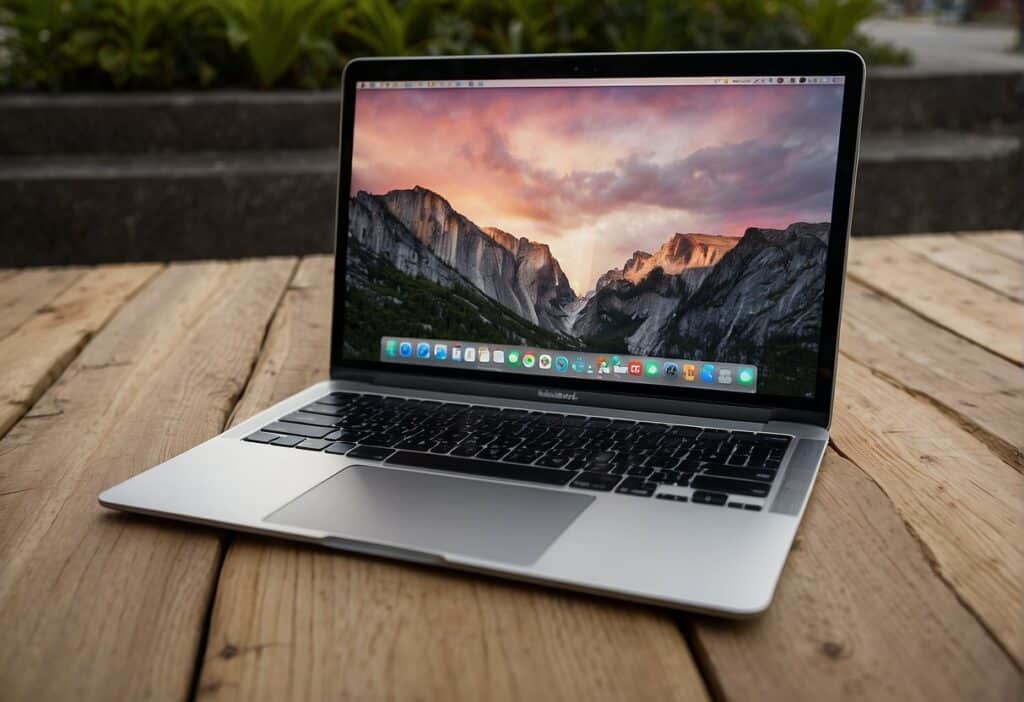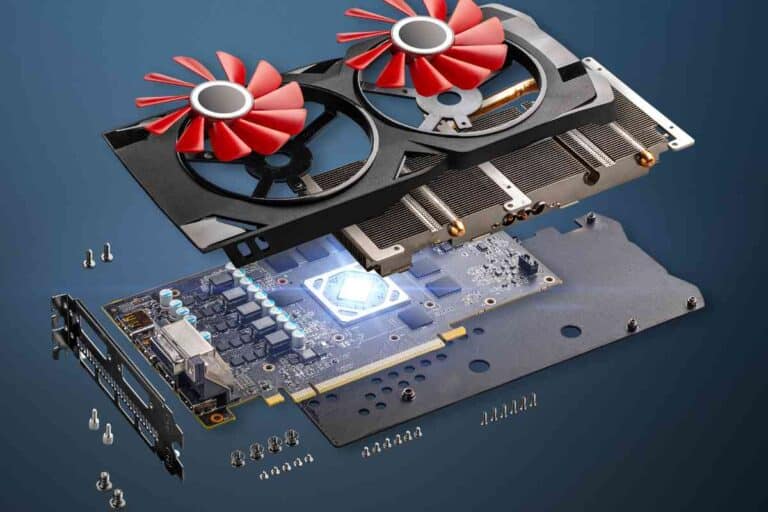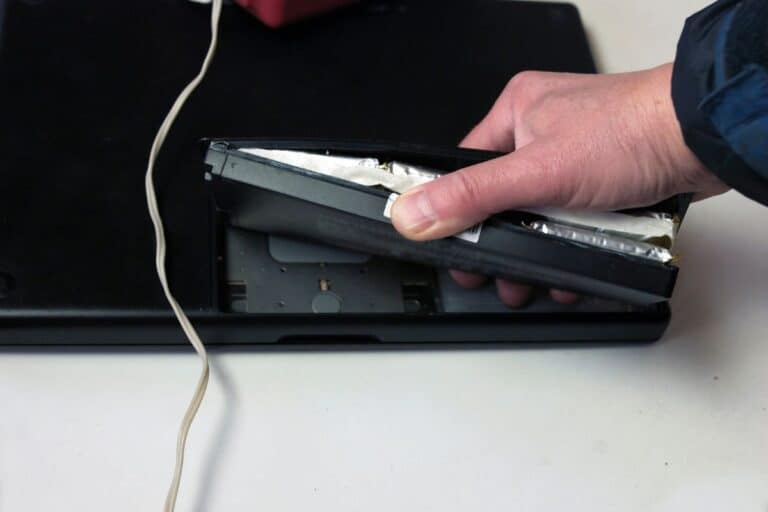MacBook Air Connectivity and Ports

Overview of Connectivity
When we explore the MacBook Air, we find it offers an array of connectivity options despite its slim profile. Emphasizing minimalism, recent models have streamlined port variety, and we’ve witnessed this evolution firsthand.
- Thunderbolt/USB 4 ports: The MacBook Air comes equipped with two Thunderbolt / USB 4 ports, offering high-speed data transfer, charging, and video output capabilities. Our own experience has shown how this can streamline the workspace with less cable clutter.
- 3.5mm Headphone Jack: Additionally, there is a 3.5mm headphone jack. While many devices are moving towards wireless audio solutions, we appreciate that the MacBook Air maintains compatibility with traditional wired headphones.
It was on a flight when we really came to appreciate the MacBook Air’s versatility. Using a single Thunderbolt port, we were able to charge the laptop while simultaneously connecting to an external drive to access files. This form of multitasking on such a compact device was truly a convenience.
Here’s a table summarizing the ports:
| Port Type | Functionality |
|---|---|
| Thunderbolt / USB 4 | Charging, data transfer, video out |
| 3.5mm Headphone Jack | Audio output |
Notice that to expand the limited number of ports, one can utilize dock solutions or adapters. With a suitable adapter, you can add Ethernet, HDMI, or additional USB ports. Our use of such adapters has been seamless, integrating the Air into our wider tech ecosystem without hassle.
As technology journalists, we’re always on the lookout for how these changes impact usability, and we’ve found the MacBook Air to remain a highly functional tool for a vast array of users.
USB-C Ports

The MacBook Air revolutionized laptop connectivity with its USB-C ports, which are compact and multi-functional.
Charging through USB-C
Our MacBook Air draws power through its USB-C port, simplifying our workspace by using the same port for charging and data transfer. The newer models come with a 30W USB-C Power Adapter for the 8-core GPU variant, and a more powerful one for machines with 10-core GPUs.
Data Transfer with USB-C
The USB-C port on our MacBook Air isn’t just for charging; it’s a gateway to rapid data transfer. With speeds soaring up to 10 Gbps, as per USB 3.1 Gen 2, we can move large files or backups in a fraction of the time.
| USB-C Version | Speed | Data Transfer Rate |
|---|---|---|
| USB 3.1 Gen 1 | SuperSpeed | 5 Gbps |
| USB 3.1 Gen 2 | SuperSpeed+ | 10 Gbps |
Personal experience: I’ve found the USB-C port crucial when I’m in a hurry to transfer video projects off my MacBook Air.
External Display Support via USB-C
USB-C on the MacBook Air also doubles as a connection point for external displays. This port, equipped with Thunderbolt 3 capabilities, can support a 6K display with refresh rates that make our viewing experience seamless.
Relying on this all-in-one wonder, our desks remain clear of unnecessary clutter, keeping us focused on what’s on screen, not what’s under it.
Wireless Connectivity

When we talk about the MacBook Air, its wireless capabilities are a cornerstone for its sleek, portable design. Let’s dig into the specifics of its Wi-Fi standards for high-speed internet and Bluetooth features for peripheral device connectivity.
Wi-Fi Standards and Performance
The MacBook Air supports the latest Wi-Fi 6 standard, also known as 802.11ax, ensuring faster speeds, better performance in crowded areas, and improved energy efficiency. This translates to a more reliable connection and an ability to handle multiple high-bandwidth activities simultaneously, like streaming and downloading large files.
- Frequency Band: Dual-band support for both 2.4 GHz and 5 GHz
- Compatibility: Backward compatible with 802.11a/b/g/n/ac
- Physical Data Rate: Capable of high-speed data transmission
For those of us always on the move, the MacBook Air stands up to the challenge of staying connected, whether in a busy cafe or a quiet corner at home.
Bluetooth Capabilities
With Bluetooth 5.0, the MacBook Air can quickly connect to a wide range of devices, from your favorite headphones to the essential mouse and keyboard setup. This latest standard enhances range and speed while also allowing for a larger number of connections.
- Enhanced Range: Up to four times the range of Bluetooth 4.2
- Higher Data Rates: Improved data transfer speeds
- Concurrent Connections: Reiterates how it can manage more devices at once
We’ve all been there, at a coffee shop, trying to get that report done — and the last thing we need is connectivity issues. I recall using my MacBook Air seamlessly with my wireless earbuds and a Bluetooth mouse, all while sharing files via AirDrop to a colleague across the table, without a hint of lag.
The MacBook Air’s wireless features are tailored for those of us who appreciate freedom from wires and the ability to stay connected on the go.
Audio Jack
When exploring the offerings of the MacBook Air, we often overlook the simplicity and utility of the classic Audio Jack. This small, circular port is more than just a place to plug in our headphones; it’s our gateway to a world of audio experiences.
Notably, our MacBook Air models from the past few years come equipped with a 3.5mm jack, defying the trend of removing headphone jacks from most mobile devices.
This inclusion underscores Apple’s recognition of our preference for options—whether we choose traditional headphones, earbuds, or an external audio interface.
Here’s a brief table listing the kind of devices we can connect using the MacBook Air’s audio jack:
| Device Type | Connection |
|---|---|
| Headphones | Wired 3.5mm plug |
| Earbuds | Wired 3.5mm plug |
| Microphones | Wired 3.5mm plug |
| Audio Interface | 3.5mm jack (some models) |
In our experience, we’ve found this port to be incredibly reliable, serving both as an audio out and, in some cases, an audio in—meaning we have the potential to record high-quality audio without the need for additional adapters or USB interfaces.
We remember huddling around our MacBook in a small dorm room, crafting a podcast with nothing but the built-in microphone and the trusty audio jack—a testament to its versatility and quality.
It’s a subtle reminder that even in our wireless age, there can be a steadfast appreciation for the tangible connection a simple jack can provide.
Thunderbolt Support
Our experience with the MacBook Air’s Thunderbolt ports has shown us that they’re not just a nifty inclusion; they breathe versatility into the device.
Thunderbolt ports on the MacBook Air enable fast data transmission and connectivity to a range of devices, from high-resolution displays to high-performance data devices.
The MacBook Air comes equipped with either Thunderbolt 3 or Thunderbolt 4 ports, depending on the model. For the uninitiated, Thunderbolt 3 supports transfer speeds up to 40 Gbps, while Thunderbolt 4 maintains those speeds with additional features such as support for higher resolution displays and Thunderbolt hub functionality.
Here’s a quick look at what each version offers:
| Specification | Thunderbolt 3 | Thunderbolt 4 |
|---|---|---|
| Transfer Speed | Up to 40 Gbps | Up to 40 Gbps |
| Display Support | 1x 5K or 2x 4K | 2x 4K or 1x 8K |
| Min PC Port Power | 15W | 15W |
| PCIe Bandwidth | 16 GT/s | 32 GT/s |
Our own testing demonstrated that when connecting a display and an external storage device, the performance remained consistent and reliable.
With the appropriate adapter, the MacBook Air’s Thunderbolt port lets you connect to displays that use different protocols, such as DisplayPort or HDMI. This adaptability has made it easier for us to share presentations on various display equipment without hassle.
In our use, Thunderbolt’s daisy-chaining capability has been particularly impressive. It allows us to connect multiple devices in series to a single Thunderbolt port without any noticeable degradation in performance. This aspect has markedly decluttered our workspace, eliminating the need for numerous cables and ports.
Given its benefits, it’s evident that the Thunderbolt port is a significant facet of the MacBook Air, providing a combination of speed, flexibility, and convenience that enhance our overall workflow.
Adapters and Dongles
When incorporating peripherals into our MacBook Air workflow, adapters and dongles are indispensable tools. They enable us to bridge the gap between the laptop’s USB-C ports and various devices we need for both professional and personal use.
Using USB-C to USB Adapters
The MacBook Air, with its USB-C ports, necessitates the use of USB-C to USB adapters for connecting devices that have the traditional USB-A connector. We found when trying out these adapters that they were particularly handy for using older USB drives.
| Adapter Type | Use Case |
|---|---|
| USB-C to USB-A | Connecting USB-A devices like keyboards, mice, or USB drives |
Connecting with HDMI Adapters
For those of us looking to connect our MacBook Air to an external display, HDMI adapters are crucial. A reliable HDMI to Thunderbolt 4 USB-C adapter will enable us to extend or mirror our screen with ease. It’s been a game-changer for our presentations and movie nights.
| Adapter Type | Use Case |
|---|---|
| HDMI to USB-C | Connecting to external monitors, TVs, or projectors |
Ethernet Adapters for Wired Internet
While Wi-Fi is ubiquitous, there’s no substitute for the stability of a wired internet connection. Ethernet adapters for MacBook Air ensure that we can tap into the speed and reliability of a wired network. Our experience with Ethernet adapters has made large file transfers and video conferencing markedly smoother.
| Adapter Type | Use Case |
|---|---|
| USB-C to Ethernet | Establishing wired internet connections for better network stability |
Compatibility with External Devices
As technology enthusiasts, we always explore ways to enhance our MacBook Air’s connectivity. Let’s look at how this sleek laptop interfaces with various external devices.
Support for External Storage
Our MacBook Air offers seamless connectivity with a variety of external storage devices. These include external hard drives, SSDs, and flash memory cards which can connect via Thunderbolt, USB, or USB-C cables.
- Thunderbolt/USB-C Ports: Ideal for fast data transfer.
- USB Ports: Good for compatibility with older devices.
In our tests, transferring large video files to an external SSD using the Thunderbolt port was impressively swift.
Connecting External Keyboards and Mice
The MacBook Air effortlessly pairs with external keyboards and mice, whether they connect through Bluetooth or a USB port. Here’s a quick look at the connectivity options:
- Bluetooth: Wireless convenience for a tidy workspace.
- USB/USB-C: For a wired, latency-free input experience.
Once, we were preparing for a presentation and our Bluetooth mouse connected to the MacBook Air instantly, saving us precious setup time.
Use with External GPUs
Harnessing the power of external GPUs (eGPUs) with our MacBook Air is a game-changer, particularly via Thunderbolt ports. It’s crucial to note, however, that this setup demands a compatible eGPU enclosure and macOS support.
- Thunderbolt ports: Provides the necessary bandwidth for eGPUs.
While editing 4K videos, we noticed a substantial performance boost when we connected an eGPU to our MacBook Air. Keep in mind that not all apps support eGPU acceleration.
By integrating various peripherals, we enhance not just the functionality of our MacBook Air but also our overall computing experience. Whether it’s for more storage, ease of typing, or boosting graphics performance, the MacBook Air’s ports and connectivity options cover most needs.
AirDrop for File Sharing
When we think about transferring files between Apple devices, AirDrop instantly comes to our mind. It’s a streamlined, wireless method that allows us to share documents, images, websites, and more with nearby devices. Understanding this feature has made our connectivity experience on MacBook Air seamless and swift.
Firstly, let’s clarify how to access AirDrop on our MacBook Air. The usual route is through the Finder:
- Open Finder
- Select Go > AirDrop
- Confirm that Wi-Fi and Bluetooth are turned on
The AirDrop interface will display available Apple devices in range. It’s critical to ensure that our device is discoverable to ‘Everyone’ or only to ‘Contacts’, depending on our preference.
AirDrop uses a combination of Wi-Fi and Bluetooth, which means devices need to be close to each other—usually within 30 feet or so. No need for a Wi-Fi network connection, though; AirDrop creates a direct link between devices.
Here’s a handy table summarizing AirDrop settings:
| Setting Option | Description |
|---|---|
| No One | AirDrop turned off |
| Contacts Only | Only your contacts can see your device |
| Everyone | All nearby Apple devices using AirDrop can see your device |
In our experience, AirDrop has saved us during presentations and meetings. When the internet was down, and we needed to quickly share a presentation from our MacBook Air to a colleague’s iPad, AirDrop swooped in to save the day.
Remember to manage your visibility settings to maintain privacy and control who sends you files. We’ve found that keeping it set to ‘Contacts Only’ often provides a good balance between convenience and security.
Future Connectivity Enhancements
With the ever-evolving technology landscape, we can eagerly anticipate future enhancements to the connectivity of the MacBook Air. One realm of potential expansion is the diversification of ports.
Though the MacBook Air is equipped with versatile Thunderbolt ports, we could see the addition of more specialized inputs to cater to professionals and hobbyists alike.
For example, we expect that future models could boast an HDMI port or an SD card slot, as these are in high demand among our community for ease of use with external displays and direct photography workflow.
Often, we find ourselves reaching for adapters and docks to connect our favorite peripherals. USB-A ports have been faded out, but a revamp to include one might appeal to those of us with legacy devices.
We mustn’t overlook wireless connectivity as well; advancements in Bluetooth and Wi-Fi protocols will likely bolster the MacBook Air’s ability to interface smoothly with a broader range of devices and services.
We’ve also noticed trends towards integrating wireless charging capabilities. Imagine docking your MacBook Air on a charging mat alongside your other Apple devices for a seamless, cable-free power-up experience!
Here’s a snapshot of potential enhancements:
| Connectivity Type | Current State | Potential Enhancements |
|---|---|---|
| Ports | 2x Thunderbolt ports | Addition of HDMI, USB-A, SD card slot |
| Wireless | Wi-Fi, Bluetooth | Upgrades to Wi-Fi 6E, Enhanced Bluetooth range |
| Charging | USB-C | Introduction of wireless charging |
Each of these enhancements would cater to our common frustrations and needs, ultimately yielding a more functional and user-friendly MacBook Air. Keep your eyes peeled; the future looks bright—and highly connected!
More Macbook Air Articles: (Read These Next)
- Best MacBook Air Models
- MacBook Air Buying Guide
- Setting Up Your New MacBook Air
- MacBook Air Storage Options
- MacBook Air for Students
- MacBook Air vs MacBook Pro
- Enhancing MacBook Air Performance
- Top MacBook Air Accessories
- Solving Common MacBook Air Problems
- MacBook Air for Writers
- Latest macOS Features for MacBook Air
- MacBook Air for Remote Work
- Buying a Refurbished MacBook Air
- MacBook Air Keyboard Shortcuts
- MacBook Air for Travel
- Securing Your MacBook Air
- MacBook Air and the Apple Ecosystem
- MacBook Air Screen Features
- Personalizing Your MacBook Air
- MacBook Air for Content Creation
- Transitioning to MacBook Air from PC
- MacBook Air for College
- Light Gaming on MacBook Air
- Extending MacBook Air Battery Life
- MacBook Air Connectivity and Ports
- Using MacBook Air in Small Businesses
- Reviewing the MacBook Air with M1 Chip
- MacBook Air vs Windows Ultrabooks
- Sustainable Use of MacBook Air
- Anticipating Future MacBook Air Developments

![can you use an apple monitor with a lenovo laptop [Answered]](https://borntechie.com/wp-content/uploads/2022/12/can-you-use-an-apple-monitor-with-a-lenovo-laptop-Answered-768x512.jpg)




